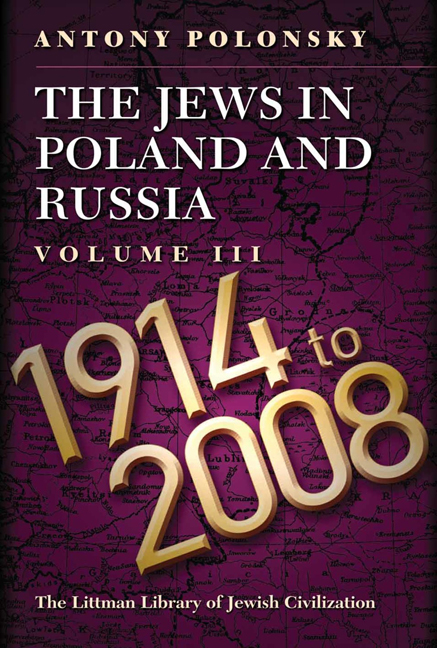Book contents
- Frontmatter
- Dedication
- Acknowledgements
- Contents
- List of Maps
- List of Tables
- Note on Transliteration
- Note on Place Names
- Maps
- General Introduction
- PART I FROM THE FIRST WORLD WAR TO THE SECOND
- PART II WAR AND GENOCIDE, 1939–1944
- PART III FROM THE END OF THE SECOND WORLD WAR TO THE COLLAPSE OF THE COMMUNIST SYSTEM
- EPILOGUE JEWS IN EASTERN EUROPE AND RUSSIA SINCE THE END OF COMMUNISM
- Conclusion
- Glossary
- Bibliography
- Index
Conclusion
- Frontmatter
- Dedication
- Acknowledgements
- Contents
- List of Maps
- List of Tables
- Note on Transliteration
- Note on Place Names
- Maps
- General Introduction
- PART I FROM THE FIRST WORLD WAR TO THE SECOND
- PART II WAR AND GENOCIDE, 1939–1944
- PART III FROM THE END OF THE SECOND WORLD WAR TO THE COLLAPSE OF THE COMMUNIST SYSTEM
- EPILOGUE JEWS IN EASTERN EUROPE AND RUSSIA SINCE THE END OF COMMUNISM
- Conclusion
- Glossary
- Bibliography
- Index
Summary
SIMON DUBNOW, in his Nationalism and History: Essays on Old and New Judaism, has described the history of the Jews since the beginning of the diaspora as that of a succession of autonomous centres. The centre that developed in Poland–Lithuania from the middle of the thirteenth century was one of the most remarkable and creative. Its history in the short twentieth century, between the outbreak of the First World War and the collapse of communism in Europe, has been tragic. In 1914 two-thirds of the world's Jews lived in this area; today 80 per cent live either in the United States or in Israel, and the communities in Russia, Poland, Ukraine, Lithuania, and Belarus are small and declining. That decline is traced in this book. It was the result of local integral nationalism, the devastating impact of the genocidal policies of Nazi Germany, and the longer-term destructive effects of communist rule, particularly in its Stalinist incarnation.
A number of contradictory processes may be observed in the evolution of Jewish life in eastern Europe since 1914. In these years a group of major Polish Jewish and Russian Jewish writers emerged, writing both in the Jewish languages and in those of the larger society. Polish literature in the twentieth century cannot be understood without taking into account the works of writers such as Boles≥aw Leśmian, Julian Tuwim, Antoni Słonimski, and Bruno Schulz. Of the four Russian-language writers who have received the Nobel Prize for literature, two, Boris Pasternak and Iosif Brodsky, were of Jewish origin. Osip Mandelstam and Isaac Babel, though their lives were cut short, are also writers of world stature.
The Polish Jewish and Russian Jewish symbiosis, comparable to similar phenomena in the German-speaking lands and the United States, was, however, limited by the failure of Jewish integration. The hope that the newly independent states of Poland and Lithuania would prove democratic and pluralistic and would find an appropriate place for their Jewish minorities was dashed. By the 1930s both states had become increasingly authoritarian, while the attraction of fascist ideas and of radical solutions to the ‘Jewish problem’ grew, particularly among young zealots. By the outbreak of war in 1939 the situation of the Jews in both of these countries had become desperate.
- Type
- Chapter
- Information
- The Jews in Poland and RussiaVolume III: 1914 to 2008, pp. 831 - 834Publisher: Liverpool University PressPrint publication year: 2012

